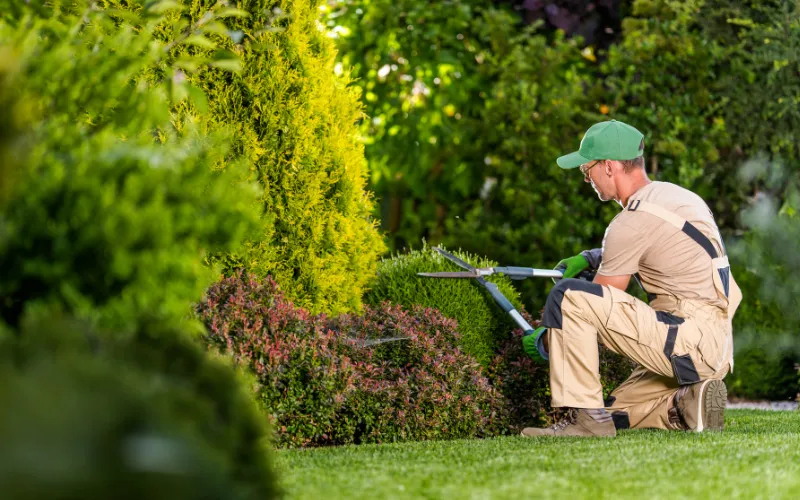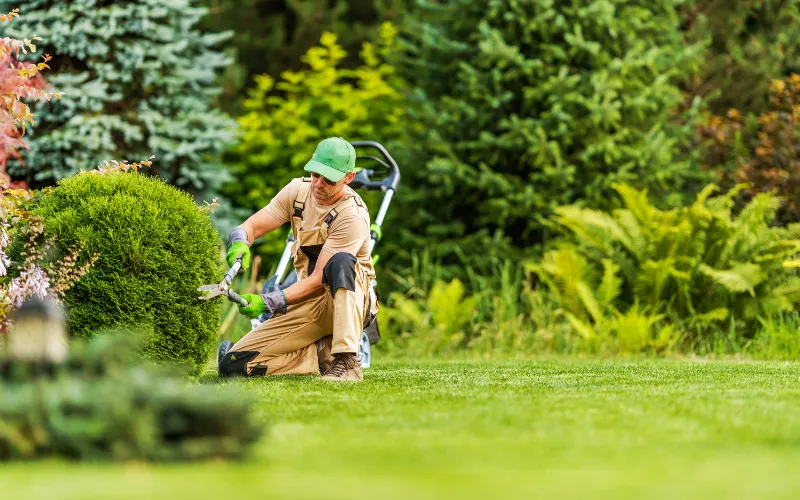When it comes to shrub care, even seasoned gardeners can make simple mistakes that may compromise the health and beauty of their plants. Whether you’re caring for evergreen shrubs or flowering varieties, understanding common pitfalls can make a big difference. Thoughtful shrub care not only promotes growth but also helps shrubs stay resilient against pests, diseases, and changing weather conditions.
This guide will walk you through the top five most common shrub care mistakes and show you how to avoid them, which guarantees your shrubs thrive and look their best. Each plant has unique needs, and by paying attention to these common mistakes, you’ll be well on your way to a healthier and more vibrant garden.
Why Shrub Care Matters
Shrubs bring life to gardens, providing structure, color, and even habitats for wildlife. They can create privacy, add seasonal interest, and enhance the overall aesthetic of any landscape. However, without proper shrub care, even the hardiest plants can struggle. Common errors like incorrect watering, poor pruning practices, or ignoring soil conditions can lead to weak, disease-prone plants. With thoughtful care, shrubs can flourish and enhance your garden for years to come.
A well-cared-for shrub also boosts the overall look and health of your landscape, which contributes to soil stability and complements other plants. Whether you’re a beginner or an experienced gardener, shrub care is a rewarding way to create a beautiful and functional outdoor space.
5 Common Shrub Care Mistakes to Avoid

Shrubs may be resilient, but like any other plant, they need consistent and mindful care to thrive. Let’s look at the top five shrub care mistakes people often make and learn how to avoid them to keep your plants healthy and beautiful.
1. Overwatering and Underwatering
One of the biggest shrub care mistakes is incorrect watering. New gardeners often overwater shrubs, which can waterlog the soil, prevent roots from getting the oxygen they need, and lead to root rot or fungal issues. At the same time, underwatering can leave shrubs dehydrated and stressed, and they are more likely to attract pests and diseases. Finding the right balance with watering is essential for shrub health.
To avoid these issues, regularly check the soil a few inches down to see if it’s dry. If it is, the shrub needs water; if it’s still moist, wait another day or two. Early morning watering works best, as it allows shrubs to soak up moisture before the day’s sun causes evaporation. A consistent watering schedule suited to your shrub types and local climate can help maintain a healthy balance, allowing plants to flourish without the risk of water stress.
2. Pruning at the Wrong Time or Too Much
Pruning is crucial for maintaining shrubs, but timing and technique are important. Pruning too early or too aggressively can damage growth patterns and cause shrubs to struggle. For example, pruning spring-blooming shrubs too soon can remove buds that would have flowered, while heavy pruning in the wrong season can stress the plant and make it vulnerable to disease.
To promote healthy growth, learn each shrub’s natural growth cycle. Most spring-blooming shrubs should be pruned right after they flower, while summer bloomers can be pruned in early spring. Begin by trimming dead or diseased branches, and try not to remove more than one-third of the shrub’s overall growth at a time.
3. Planting Shrubs Too Close Together
Shrubs need space to grow properly, but planting them too close is a common shrub care mistake. When shrubs are too crowded, they compete for sunlight, water, and nutrients. This competition can limit growth and weaken the plants, while close spacing can also reduce air circulation, increasing the risk of fungal diseases and pests.
Before planting, research the mature size of each shrub to give it enough room to grow naturally. Proper spacing supports good airflow, reduces the likelihood of disease, and makes it easier to care for each plant. Thoughtful shrub care includes planning a layout where each plant can reach its full potential without crowding.
4. Ignoring Soil Health and Fertilization
Healthy soil is fundamental to shrub care, yet many gardeners overlook it. Soil quality and nutrients are essential for growth, and if the soil lacks key nutrients or has an unsuitable pH level, shrubs can struggle and become more prone to disease. Without the right soil conditions, you might notice issues like yellowing leaves or stunted growth.
Testing your soil gives you helpful information on nutrient levels and pH so you know what adjustments might be needed. Once you know your soil’s needs, choose a fertilizer suited to your shrubs, such as a slow-release type that delivers nutrients over time. Good shrub upkeep starts with healthy soil, and with regular soil maintenance, your plants will have the nutrients they need to thrive.
5. Failing to Protect Shrubs from Seasonal Weather
Each season brings unique challenges, and overlooking seasonal care is a common shrub care mistake. Cold winter weather can damage branches and roots, while hot summer days can cause soil to dry out quickly. Spring storms and fall temperature shifts can also stress shrubs, making them more vulnerable to pests and disease.
Adjusting shrub care with each season helps your plants stay resilient. In winter, mulch around the base of the shrub to insulate roots, and consider wrapping delicate plants in burlap to protect them from frost. In summer, mulch can help retain soil moisture, while temporary coverings can shield shrubs from intense wind or storms. With seasonal adjustments, you can keep shrubs healthy and ready to thrive throughout the year.
Frequently Asked Questions
Shrub trimming costs between $5 and $20 per shrub. The exact price depends on elements like the size of the shrub and any special shaping or detailed trimming required. Larger or more complex shrubs may be on the higher end, while smaller shrubs usually fall closer to the $5 range.
Most shrubs live about 10 to 15 years, although this can vary depending on the type of shrub and how well it’s cared for. With regular watering, proper pruning and trimming, and seasonal maintenance, many shrubs will live at least this long and sometimes longer. Stronger varieties, like evergreens, can last even longer if they’re well-suited to the environment. Taking good care of shrubs helps them stay healthy and last as long as possible.
If your shrubs are wilting, have scorched leaves, or show signs of sunburn (pale or brown patches on leaves), they may be getting too much direct sunlight. Think about planting them in a spot that receives partial shade or plant sun-loving shrubs specifically suited to your climate.
Final Thoughts
Proper shrub care is essential to maintaining a vibrant, thriving landscape. By steering clear of common mistakes like overwatering, improper pruning, overcrowding, ignoring soil quality, and neglecting seasonal prep, you’re setting up your shrubs for long-term health and beauty.
Ready to take your shrub care to the next level? Connect with the experts at Audet Enterprises! Contact us for personalized guidance and support to build a vibrant, resilient garden you’ll love all year long.
⬇️ Find us on Google Maps: Yard Cleanup Services in Portland, Maine ⬇️


